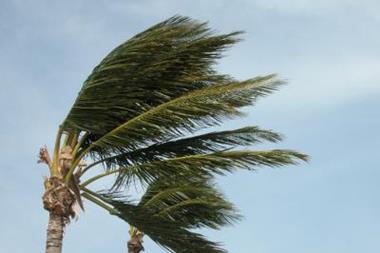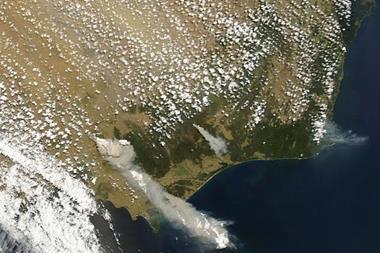Financial problems at insurers boost demand for reinsurance
Hannover Re announced a hike in premium income and profits for the first half of 2009.
Financial highlights (2008 in brackets)
- GWP €5.3bn (€4.1bn).
- Net premium earned €4.5bn (€3.4bn)
- Operating profit €600.1m (€400.2m)
- Net income increased €419.0m (€252.2m)
- Combined ratio 97.1%
- Catastrophe losses within the expected bounds
Chief executive Ulrich Wallin said: "We achieved gratifying results in both our underwriting business and on the investments side, and we are therefore well on track to generate the forecast return on equity of at least 18% for the full 2009 financial year",
Non-life reinsurance
The capital squeeze felt by primary insurers in the wake of the financial market crisis has led to stronger demand for reinsurance protection. "The treaty renewals on 1 June and 1 July also passed off very well for our company overall. Yet we were not satisfied with the movements in the rate level in all segments", Wallin said.
"In view of our profit-oriented underwriting policy, we therefore reduced our exposures – especially in property catastrophe business in the United States and Japan, but also in some casualty segments."
Stronger demand for reinsurance protection was also observed in worldwide credit and surety insurance. In the area of structured covers, too, the reverberations of the financial market crisis injected significant growth impetus as anticipated. All in all, the prospects for worldwide non-life reinsurance are very promising.
GWP up 16%
Gross premium in non-life reinsurance as at 30 June 2009 improved on the comparable period of the previous year by 16.0% to reach €3.1bn (€2.7bn). At constant exchange rates, especially against the US dollar, the increase would have been 12.0%. The level of retained premium climbed to 94.1% (89.4%) due to sharply lower retrocessions. Net premium earned consequently rose by 19.2% to €2.5bn (€2.1bn).
Air France crash
In the second quarter Hannover Re incurred only a modest number of major losses. The largest single loss event was the crash of an Air France passenger jet with a strain of some €30m for net account. The total net burden of major losses amounted to €163.3m (€130.0m). This was equivalent to 6.6% of net premium in non-life reinsurance, a figure below the expected level of 10%. The combined ratio stood at 97.1% (98.4%).
Net underwriting income in non-life reinsurance improved from €23.6m in the corresponding period of the previous year to €57.3m.
The operating profit (EBIT) in this business group increased by 10% to €317.1m (€288.2m). Group net income grew by 14.1% to €223.2m (€195.7m).
Life and health reinsurance
Owing to a visible weakening in the solvency position of life insurers, demand for reinsurance solutions continued to rise – leading to an increased clamour for risk- and financially oriented products. This state of affairs was especially evident in the United States, where the insurance industry had suffered considerable erosion of its capital base.
Hannover Re's worldwide life and health reinsurance business enjoyed further profitable growth following the acquisition of the ING portfolio in January 2009. "With this transaction we were able to further strengthen the segment of risk-oriented life reinsurance, which had hitherto been underrepresented in the United States", Wallin explained.
Hannover Re remains keenly interested in the seniors' health market and the financial solutions sector in the US. Not only that, the new markets segment – in which Hannover Re writes enhanced annuities and ranks among the market's leading reinsurers in the United Kingdom – also offers considerable potential. Here, as is also the case with the reinsurance of existing pension funds, the opportunities for further profitable expansion are very good.
Hannover Re maintains a regional focus on the so-called BRIC markets (Brazil, Russia, India and China), although Korea – the largest life reinsurance market in Asia – also offers good growth prospects. The main drivers of business nevertheless continue to be the developed insurance markets of the United Kingdom, United States, Germany and Australia.
ING acquisition
Spurred on by the acquisition of the ING life reinsurance portfolio and brisk organic growth, gross written premium as at 30 June 2009 surged by 45.6% to €2.2bn (€1.5bn). At constant exchange rates growth would have been as high as 49.6%. The level of retained premium rose from 89.6% to 91.6%, while net premium earned increased by 48.9% to €2.0bn (€1.3bn).
The investment income generated in life and health reinsurance doubled from €154.8m to €314.0m. Positive special effects were a factor here. They derived from the reversal of unrealised losses on deposits with US cedants (B36 derivatives) and from improvements in the value of deposits assumed by Hannover Re in the context of the ING transaction. The result was adversely impacted by opposing effects in UK annuity business. On balance, the operating result (EBIT) in life and health reinsurance profited from non-recurring effects of around EUR 150 million in the first half-year.
The operating profit (EBIT) as at 30 June 2009 consequently increased sharply to €266.1m (€87.2m). The EBIT margin of 13.4% thus comfortably surpassed the target corridor of 6.5% to 7.5%. Group net income rose appreciably to €212.5m (€65.0m).
Outlook
Based on its strategic orientation and the available market opportunities, Hannover Re anticipates a good result for 2009 in both non-life and life/health reinsurance. At constant exchange rates the net premium volume is expected to grow by approximately 25%.
Websites
Hosted by comedian and actor Tom Allen, 34 Gold, 23 Silver and 22 Bronze awards were handed out across an amazing 34 categories recognising brilliance and innovation right across the breadth of UK general insurance.










































